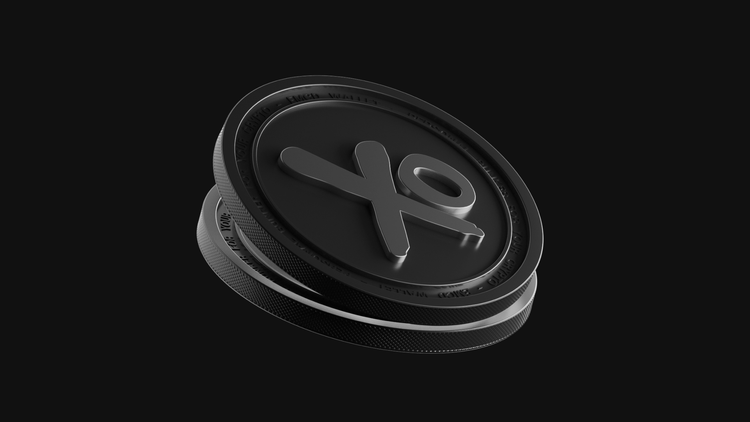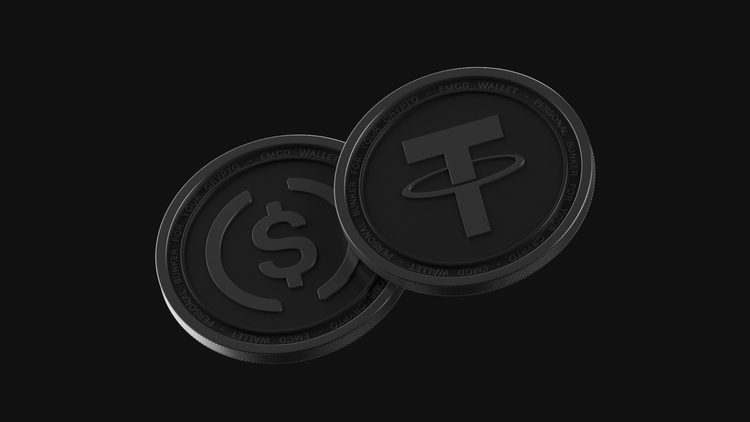USDT vs USD: What Is the Difference and Where Should You Keep Your Funds?

With the arrival of Bitcoin in 2009, the familiar financial system began to change. The first cryptocurrency gained value not from being backed by gold or state guarantees, but purely from market demand. Bitcoin (BTC) introduced a new form of money that operates independently of any government or financial institution.
Yet cryptocurrencies like Bitcoin face one major problem: extreme price volatility. Their rapid price swings make them difficult to use for everyday payments. People hesitate to spend digital coins when they cannot be sure whether those coins will be worth more — or less — the next day.
To address this, a new class of digital assets emerged: stablecoins. These cryptocurrencies are designed to maintain a stable value, usually pegged to fiat currencies such as the U.S. dollar, though some are linked to precious metals or other cryptocurrencies. The majority of stablecoins are tied to the dollar, acting as digital equivalents of cash within the crypto economy. Among them, the most widely used is USDT, also known as Tether.

What is USD?
The USD (United States Dollar) is the official currency of the United States and the world’s primary reserve currency. Over 60% of global central banks hold USD in their reserves, and most international trade and settlement flows are denominated in dollars. The prices of Bitcoin and other cryptocurrencies are also quoted in USD across most exchanges.
Unlike older currencies once backed by gold or silver, the modern dollar is not secured by physical commodities. Its value is determined by supply and demand, under the control of the U.S. Federal Reserve. The Fed expands or contracts the money supply according to monetary policy. For instance, during the COVID-19 pandemic, the Federal Reserve doubled the money supply within just two years to stabilize the economy.

Payments in USD rely on banks as intermediaries. Financial institutions charge service fees, and cross-border interbank transfers through networks such as SWIFT or SEPA can take several days. Banks may also require extensive documentation to justify and confirm transfers. In some cases, they may block or reject transactions if compliance questions arise.
USD transactions also carry geopolitical risks. Sanctions can prohibit certain individuals, companies, or even entire countries from using the dollar. Several Russian banks, for example, lost access to USD transfers after being disconnected from SWIFT, leaving their customers unable to send or receive foreign currency payments.
What is USDT?
USDT (Tether) is the largest fiat-backed stablecoin, with a market capitalization exceeding $66 billion. It is issued by the Hong Kong–based company Tether Limited.

The project began in July 2014 under the name Realcoin and was rebranded as Tether (USDT) in November of the same year. Originally built on the Omni Layer protocol atop the Bitcoin blockchain, USDT enabled direct exchange with BTC. Its first listings appeared on Bitfinex, and today the token is traded on nearly every major exchange worldwide.

As demand grew, Tether expanded USDT issuance across multiple blockchains, including Ethereum, Tron, EOS, Algorand, and Solana. Each token is designed to maintain a 1:1 peg with the U.S. dollar, backed by reserves such as cash, short-term treasuries, and other financial instruments.
Issuance, circulation, and redemption of USDT

The process of USDT issuance and redemption, described in Tether’s whitepaper, consists of five steps:
- Issuance: Institutional clients (mainly exchanges) deposit USD into Tether’s bank account. In return, Tether mints an equivalent amount of USDT.
- Exchange listing: The newly minted USDT are deposited into exchange accounts (for example, Bitfinex), where clients can withdraw them to wallets.
- Circulation: USDT circulates in the crypto economy, used for transfers, trading, and payments.
- Return: Institutional clients send USDT back to Tether Limited for redemption.
- Redemption and burning: Tether transfers fiat USD back to the client’s bank account, and the redeemed USDT are destroyed (burned) to reduce supply.
Only institutional clients have direct access to this process. Retail users cannot mint or redeem USDT directly with Tether. For everyday users, USDT enters circulation via exchanges or P2P markets.
In theory, this mechanism ensures that each USDT is backed by one U.S. dollar in reserves.
How USDT is used
Trading
USDT is the most common trading pair on exchanges. Its stable value allows traders to lock in profits, reduce exposure to volatility, and move quickly between digital assets without leaving the blockchain.

Savings
In developing countries suffering from inflation, USDT is often used as a digital substitute for the dollar. Buying USDT with local currency is similar to buying USD, but access is often easier and faster through crypto exchanges or P2P platforms.
Investing
USDT is widely used in DeFi protocols like Aave and Compound, where it can be deposited to earn yields of 5–10% or more annually, depending on market conditions.
Transfers
USDT enables cheap and instant cross-border transfers, replacing traditional systems like Western Union or MoneyGram. Because it exists entirely on blockchain networks, transaction costs are minimal.
International trade
Businesses are increasingly adopting stablecoins like USDT for settlements. Unlike USD wires, USDT transactions are simpler, faster, and do not require banking intermediaries. By 2022, nearly 30 000 merchants worldwide were already accepting cryptocurrencies as payment.
USD vs USDT: Key Differences
| Feature | USD | USDT |
| Usage | Global, but subject to restrictions and sanctions | Global, restrictions possible only on centralized exchanges |
| Issuance | Centralized by the Federal Reserve | Centralized issuance, decentralized blockchain transfers |
| Form | Cash and bank deposits | Digital blockchain token |
| Backing | Not backed by reserves | Backed by dollar-denominated reserves |
| Counterfeiting | Possible | Impossible on blockchain/td> |
| Transfer cost | High; bank fees | Low; blockchain fees |
| Speed | Days (SWIFT, SEPA) | Seconds to minutes |
Centralization
The dollar is fully controlled by the U.S. Federal Reserve and U.S. government. They decide issuance levels, regulate access, and combat counterfeit activity.
USDT is a hybrid. Its issuance and redemption are centralized, managed by Tether Limited, while circulation is decentralized, as tokens move across blockchains without direct issuer control.
Acceptance
USD is the most widely accepted fiat currency in the world. USDT is the most widely adopted stablecoin, used daily for crypto trading, payments, and transfers.
Systemic role
USD underpins the global financial system, commodity trade, and the SWIFT network. USDT underpins the crypto economy, serving as its primary medium of exchange and store of value.
USDT vs USDC: Which is Better?
The second-largest stablecoin is USDC (USD Coin), with a circulation of more than $55 billion. Like USDT, it is pegged 1:1 to the dollar.

USDC is issued by Centre, a consortium founded by Circle and Coinbase, both U.S.-based companies. Operating under U.S. jurisdiction means stricter regulatory oversight, public audits, and higher transparency. This boosts trust in USDC reserves.
USDT, meanwhile, has faced repeated questions about transparency. Tether has disclosed that part of its reserves are held in commercial paper, raising doubts about their true value. These concerns grew after the collapse of UST, an algorithmic stablecoin that lost its peg in 2022 and wiped out billions in market value.

Since then, capital has shifted between the two stablecoins: USDT’s market cap fell from $83B to $67B, while USDC grew from $48.5B to $56B over the same period. Today, USDT remains the largest stablecoin, but USDC is considered more transparent and increasingly competitive.
F.A.Q.
What is the main purpose of USDT?
USDT serves as a digital dollar for crypto markets. It provides stability, reduces volatility, and allows for fast blockchain-based payments and trading.
Is USDT safer than USD?
No. USD is legal tender backed by the U.S. government. USDT is a private token with counterparty and regulatory risks.
Can I convert USDT to USD easily?
Yes, through exchanges, P2P markets, or OTC desks. Conversion speed and fees depend on the platform.
Why do traders prefer USDT over USD?
Because USDT enables instant transfers between exchanges and integrates seamlessly with trading platforms, while USD transactions require slower bank processes.
Is USDT backed by real dollars?
Tether claims full backing through cash and dollar-based securities. However, reserve transparency has been debated.
What are the risks of holding USDT?
USDT carries the risk of losing its dollar peg, potential regulatory scrutiny, and dependence on the issuer’s reserves.
Conclusion
The USDT vs USD difference is more than a single letter. USD is the backbone of the global economy, while USDT is a blockchain-based tool built to mirror it. Both have distinct strengths and weaknesses.
USD dominates traditional finance, but it is slower and more expensive to move. USDT dominates the crypto economy, enabling fast, borderless transactions, but carries issuer and regulatory risks.
For long-term growth, EMCD offers solutions beyond simple holding. With Coinhold, users can earn daily rewards while keeping full control over their assets. And with EMCD Wallet, you can store USDT, swap instantly, and connect to other ecosystem tools — all in one secure platform.
Start managing your digital assets smarter with EMCD — where USD-linked stablecoins meet real earning opportunities.




